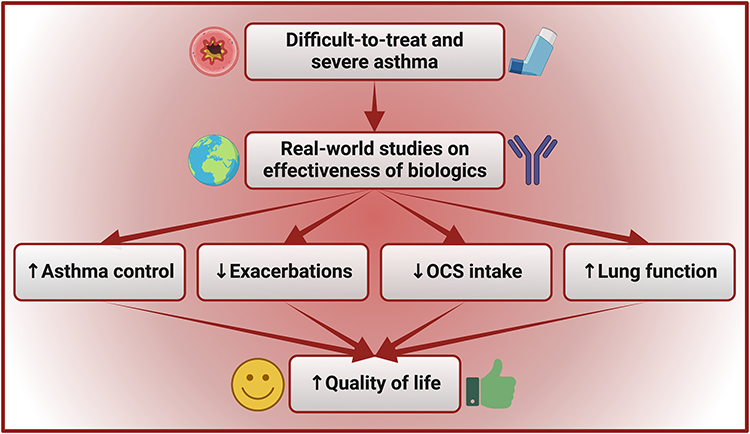
Pelaia C, Giacalone A, Ippolito G, Pastore D, Maglio A, Piazzetta GL, Lobello N, Lombardo N, Vatrella A, Pelaia G. Pragmat Obs Res. 2024;15:45-51 https://doi.org/10.2147/POR.S396799

Abstract: Many different phenotypes that characterize severe asthma are supported by intricate pathomechanisms called endotypes. The latter are driven by molecular interactions, mediated by intercellular networks. With regard to the biological treatments of either allergic or non-allergic eosinophilic type 2 asthma, real-world studies have confirmed the positive effects of currently available antibodies directed against immunoglobulins E (IgE), interleukin-5 (IL-5) and its receptor, as well as the receptors of interleukins-4 (IL-4) and 13 (IL-13). The best way to treat severe asthma should be chosen based on the peculiar phenotypic and endotypic traits of each patient. This will lead to relevant improvements in both clinical and functional outcomes. In particular, biological therapies can change the lives of asthma patients with a strong impact on quality of life. Unfortunately, patients with severe non-type-2 asthma, who continue to have pertinent unmet needs, are not receiving satisfactory advances within the context of biological treatments. It is also hopeful that in the next future new therapeutic strategies will be specifically implemented for these people, perhaps offering them the opportunity to improve their current, mostly inadequate asthma management.
